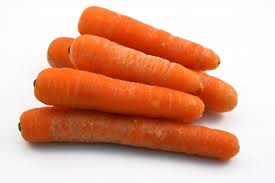Our bodies need all the B-complex vitamins in order to function normally. They have antioxidant properties and help the organs, production of blood and tissue cells, help slow the aging process and lift our mood due to their actions on the brain. You will note that these vitamins are not the full sequence of numbers, but these listed here are all the B group vitamins currently known. Some are not now classed as vitamins and these have been noted.
Vitamin B1-thiamine.This is found in oatmeal and flax, sunflower seeds and pastas. The body needs this to convert the carbohydrates we eat into energy and to stimulate the amino acids.
Vitamin B2-riboflavin. This is found in mushrooms, almonds, dairy products, leafy green vegetables and asparagus, some fruits such as persimmons, liver and kidneys. It is also added to energy drinks and used as a food additive (in yellow–orange powdered form) in pasta, sauces etc. It is needed for normal growth, and helps in the treatment of jaundice, is good for the liver functions and may help reduce migraines. It is also good for the eyes.
Vitamin B3-niacin. This is essential for healthy cells and the production of steroid hormones produced in the adrenal gland, such as testosterone and oestrogen. It is found in avocados, dates, tomatoes, leafy green vegetables, mushrooms, nuts, offal, chicken, tuna, salmon, eggs and milk and other food items.
Vitamin B4-adenine. This is no longer considered a B vitamin, but it helps bind niacin and riboflavin.
 Vitamin B5-pantothenic acid. This gets its name from the Greek, pantothen meaning from everywhere, and is found in almost every food as the name suggests. It is especially high in cereals and beans and lentils, eggs, meat and royal jelly, as well as in broccoli and avocados. It is an energy booster and can help in sleep disorders, wound healing, hair growth, acne and diabetes.
Vitamin B5-pantothenic acid. This gets its name from the Greek, pantothen meaning from everywhere, and is found in almost every food as the name suggests. It is especially high in cereals and beans and lentils, eggs, meat and royal jelly, as well as in broccoli and avocados. It is an energy booster and can help in sleep disorders, wound healing, hair growth, acne and diabetes.Vitamin B6- pyridoxal and pyridoxamine. This plays a role in helping amino acids convert into other chemical substances in the body. It has many uses in this way, but perhaps the one that is most important to our general well-being is that it converts tryptophan to serotonin, which makes us fell happy. Vitamin B6 helps the neurotransmitters function normally and helps the function of haemoglobin as well as its synthesis and that of histamine. It is good for the eyes and the brain and can be found in meats, whole grains, and their products, vegetables and nuts and also bananas. However boiling foods can destroy up to 50% of this vitamin as can the freezing and canning processes. It’s better to eat nuts and bananas to be sure of getting this vitamin.
 Vitamin B7 – biotin. This one regulates the blood sugar levels, strengthens hair and nails, and is good for skin. It is also called Vitamin H which comes from the German “Haar und haut,” meaning hair and skin. It is also good for diabetics. It is found in liver, egg yolks, grains and some vegetables.
Vitamin B7 – biotin. This one regulates the blood sugar levels, strengthens hair and nails, and is good for skin. It is also called Vitamin H which comes from the German “Haar und haut,” meaning hair and skin. It is also good for diabetics. It is found in liver, egg yolks, grains and some vegetables.Vitamin B8 – adenosine monophosphate (AMP). This consists of vitamin B4 (adenine) and the sugar, ribose. It improves the transmission of information between cells by the neurotransmitters.
 Vitamin B9 – folic acid or folate. This is essential for normal body functions. We need folate to synthesize and repair DNA and this is necessary for normal growth and healthy red blood cells. Folate comes from the Latin word for leaf-folium and as the name suggests it can be found in leafy greens such as turnip tops, spinach and asparagus. It is also present in beans, peas, lentils, liver and baker’s yeast among other things. Broccoli, brussel sprouts, tomatoes, oranges, bananas, strawberries and raspberries are also excellent sources of this vitamin. It is also found in fortified bread, pasta and breakfast cereals.
Vitamin B9 – folic acid or folate. This is essential for normal body functions. We need folate to synthesize and repair DNA and this is necessary for normal growth and healthy red blood cells. Folate comes from the Latin word for leaf-folium and as the name suggests it can be found in leafy greens such as turnip tops, spinach and asparagus. It is also present in beans, peas, lentils, liver and baker’s yeast among other things. Broccoli, brussel sprouts, tomatoes, oranges, bananas, strawberries and raspberries are also excellent sources of this vitamin. It is also found in fortified bread, pasta and breakfast cereals.Vitamin B12 – cyanocobalamin. This is essential for the production of healthy red blood cells. It is also the name given to a class of chemicals which act in the same way as cyanocobalamin.
Vitamin B17 – amygdalin. This is found in apricot kernels and almonds (Prunus dulcis) and comes from the Greek amygdalin meaning almond or almond shaped. There has been some controversy surrounding this as it has also been called laetrile and touted as a cure for cancer. Here is a statement from the US Food and Drug Administration, which still seeks jail sentences for those who sell it as an anti-cancer treatment. [Laetrile is a] “highly toxic product that has not shown any effect on healing cancer.”





















